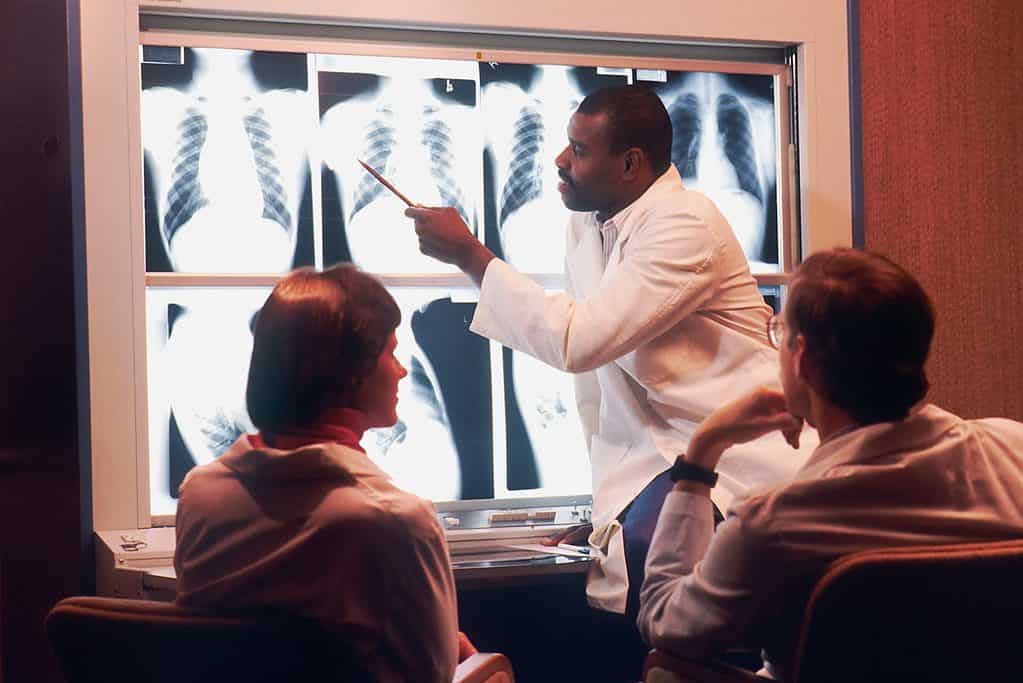Heart attacks affect 805,000 people annually in the US, and heart conditions alone are responsible for about 1 in 5 of the total deaths occurring in the country. Many of these cases could be prevented, but studies highlight that even if a person is young and follows a perfectly healthy lifestyle, they can still have a heart attack. Luckily, we may have a new ally in the form of technology.

A team of researchers has created an AI that assesses the risk of you having a heart attack in the next 10 years, just by looking once at your chest X-ray.
“Our deep learning model offers a potential solution for population-based opportunistic screening of cardiovascular disease risk using existing chest X-ray images,” said Dr. Jakob Weiss, lead researcher, and radiologist at Massachusetts General Hospital.
Current heart attack prediction model
Heart disorders that originate from reduced or blocked blood flow in arteries due to the accumulation of cholesterol and fat in them are called atherosclerotic cardiovascular diseases (ASCVSD). It is one of the major causes of stroke in heart patients. The deep learning model developed by Dr. Weiss and his team detects patterns in X-ray images that are actually linked to heart attacks resulting from ASCVD.
Generally, if a doctor wants to predict the risk of heart attack for a patient, they employ a statistical model that calculates the ASCVD risk score. This approach involves evaluating cardiac health on the basis of factors like systolic blood pressure, age, hypertension, Type 2 diabetes diagnosis, race, addiction, blood tests, and sex. However, since it may not always be possible to have access to all these records, the researchers consider X-rays to be an ideal singular parameter for calculating heart attack risk.
“The variables necessary to calculate ASCVD risk are often not available, which makes approaches for population-based screening desirable. The beauty of this (proposed) approach is you only need an X-ray, which is acquired millions of times a day across the world. As chest X-rays are commonly available, our approach may help identify individuals at high risk,” said Dr. Weiss.
How does an AI predict heart attack risk?
The researchers developed and trained an AI called CXR-CVD risk by using 147,497 chest X-rays of 40,643 individuals who were screened for lung, ovarian, and prostate cancer during a clinical trial. They further tested their deep learning model using chest X-rays (CXRs) of 11,430 patients (the average age of these patients was 60) who were potentially at risk of heart disease and might require statin therapy in the near future.
The researchers also employed the statistical model to calculate the risk of stroke for these patients and compare it with the AI. While they were able to diagnose all the patients using the CXR CVD risk model, only 2,401 patients were tested using the standard statistical approach because data related to various factors (like cholesterol, BP, etc) was not available for all the patients.
The CXR-CVD model predicted the risk of a heart attack in 1,096 patients for an average follow-up time of 10.3 years. The study mentions that current healthcare guidelines also recommend that a 10-year risk should be calculated for patients so that they could be prescribed an effective statin treatment strategy to avert cardiovascular problems.
The researchers claimed that during the tests, their AI performed as well as the traditional statistical method. However, they need to conduct a controlled randomized trial to further confirm its efficacy.
“Based on a single existing chest X-ray image, our deep learning model predicts future major adverse cardiovascular events with similar performance and incremental value to the established clinical standard,” Dr. Weiss notes.
If the CXR-CVD risk model performs well in the upcoming trial. There is no doubt it will change the way we approach heart attack diagnosis forever.
The study was presented at the 108th Scientific Assembly and Annual Meeting of the Radiological Society of North America.
Was this helpful?



